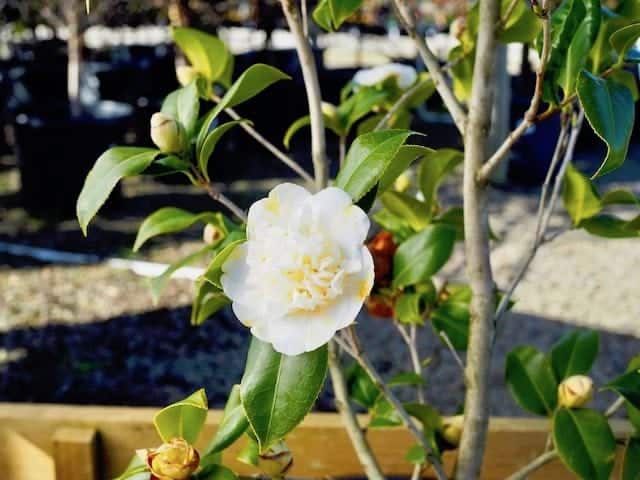10 Tips to care for Camellias

Here are our 10 tips to care for Camellias.
1.Select your Variety Wisely
When selecting which variety of Camellia will best suit your garden, start by looking at the bloom time. If you choose plants with different bloom schedules, you will be able to enjoy them for en extended period. Also, consider how certain varieties will suit your garden space. There is almost always a type of Camellia that will slot into your garden like a missing puzzle piece!
2.Planting
You can plant camellias from Autumn, Winter or Spring. When planting, dig a hole twice as wide, and just as deep as the root ball. Refill the bottom of the hole with 5-10cm of soil and pack it down. Place the plant in the centre of the hole; the roots should be slightly above the ground. Camellias do not grow well when planted too deep!
3.Select the right site
Camellias do best in light shade that protects them from the hot afternoon sun. As the Camellia, they can tolerate more sun. Ensure your chosen location has good drainage, camellias font like having wet feet. The more sheltered from the wind, the better the flowering will be – Try planting your camellias 1-2 meters from your house this will provide proper wind protection.
4.Minimal Watering
Camellias will need decent watering when planted. In hot weather, give the camellias a deep soaking twice a week, a deep soak allows the soil to remain moist for longer. Established plants get by with little supplemental water.
5. Mulch
Mulching will keep moisture in the ground, and keep your soil cooler on hot summer days. Also, mulch keeps weeds at bay. When mulching, don’t pile on too much, 3-5cm is enough. Remember, mulch should not touch the trunk of the plant.
6. Fertilizer
Fertilize Camellias in Spring after the flowers have dropped. Fertilize again in midsummer if the growth seems sluggish, or foliage begins to look sparse and lose its colour.
7. Prune after Bloom
Remove any dead or weak wood, thin out dense growth to allow room for flowers to bloom. Shorten lower branches to encourage upright growth. Cut back the top to make lanky plants bushier.
When in pots they should be placed on a surface where they can drain freely, like bricks or paving.
8.Be vigilant of infestations
Camellias are susceptible to some viruses and fungal diseases. There are two fatal diseases, Root Rot Fungus & Camellia Petal Blight. To avoid root rot, make sure your Camellias’ soil is well-drained. Petal Blight appears in the form of rust spots on the flowers if you spot it to remove any infected buds, remove all mulch surrounding the plant and replace.
9.Shaping
Most plants develop an attractive shape without pruning; however, camellias can be shaped to fit into your garden landscape perfectly. To begin with, remove any thin or disproportionate branches that stick out and don’t look right. Then prune for the general shape.
10.Step back & Enjoy your Hardwork
The Camellia is one of the worlds favourite flowers providing beautiful blooms through autumn, winter and into spring. Even when they are not blooming, they are an excellent addition to any garden, with their attractive dark green glossy evergreen leaves.
Other resources
-
 13, Jun, 2025
13, Jun, 2025How to Start a Garden Design Project: Step-by-Step Planning Guide for Beginners
At Diaco’s, we know that creating a beautiful garden starts... -
 27, May, 2025
27, May, 2025Smart Garden Layout Ideas: How to Maximise Your Outdoor Space
At Diaco’s, we believe every garden has potential. Whether you’ve... -
 9, May, 2025
9, May, 20257 Garden Design Principles to Transform Your Outdoor Space
At Diaco’s, we know that creating a garden isn’t just...


